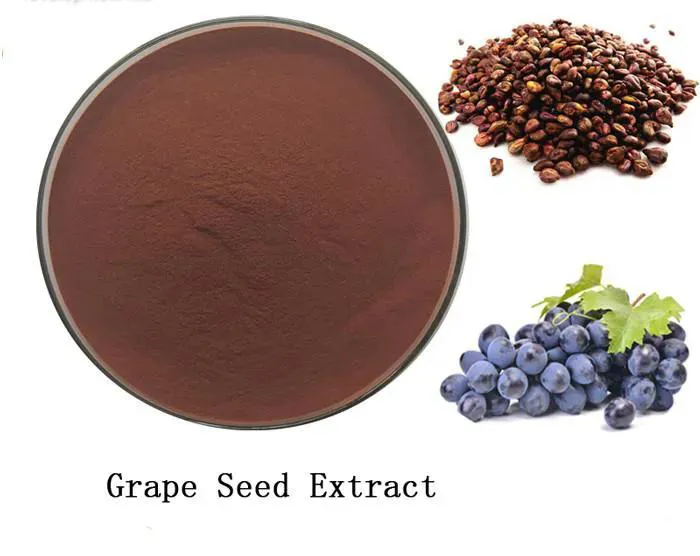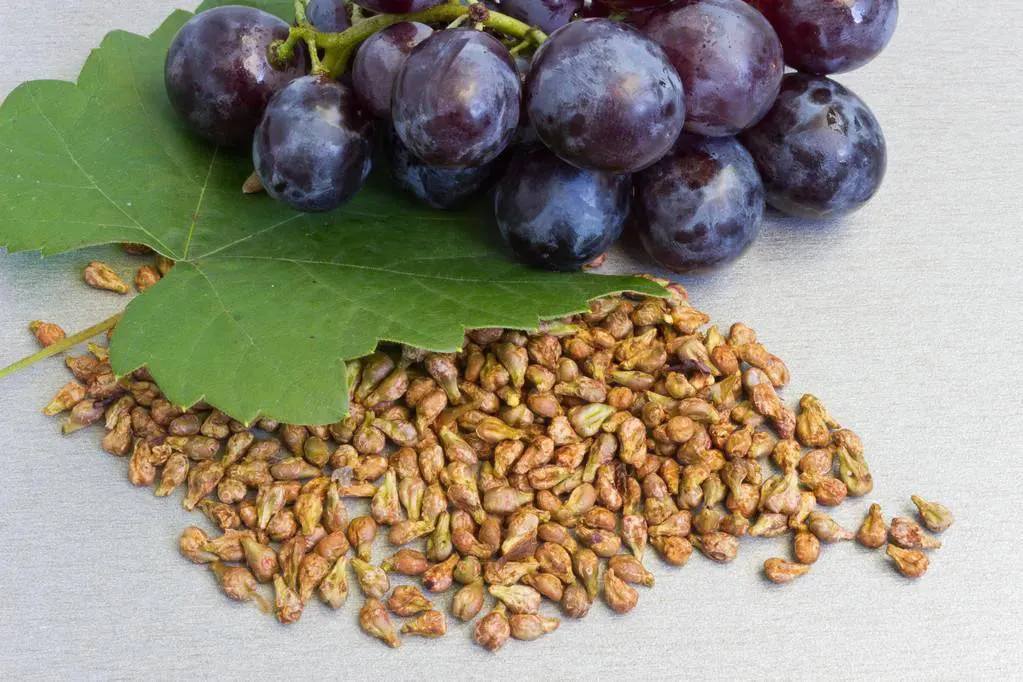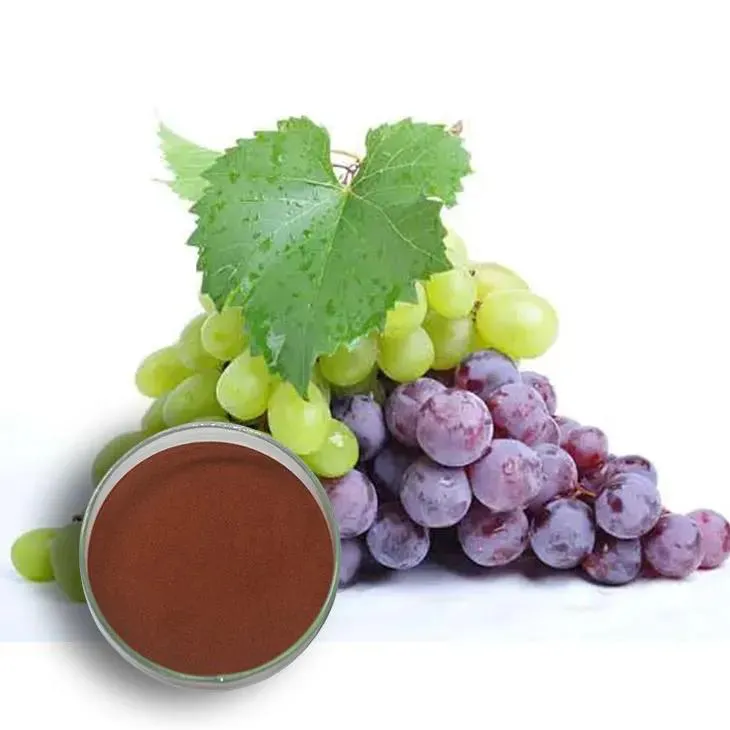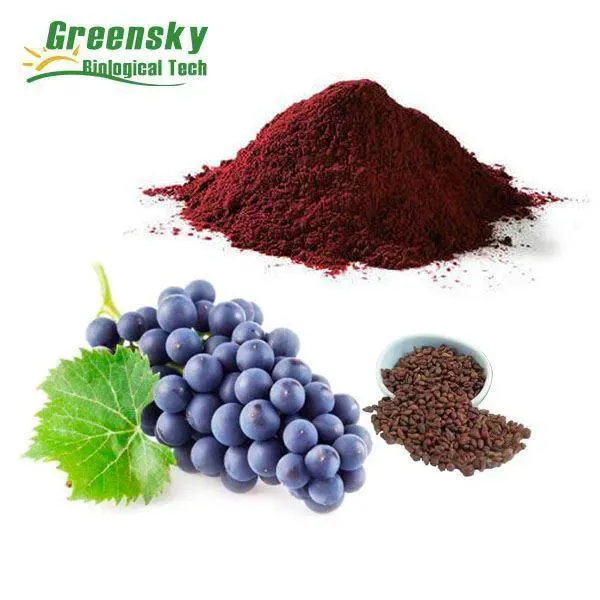- 0086-571-85302990
- sales@greenskybio.com
A Toast to Innovation: The Impact of Grape Seed Extract on Wine Flavor and Appearance
2024-08-20

Introduction
Wine has been an integral part of human culture for centuries, with its rich flavors, aromas, and beautiful appearances captivating enthusiasts around the world. In recent years, the use of Grape Seed Extract in winemaking has emerged as a significant innovation. This article delves into the profound impact that Grape Seed Extract has on both the flavor and appearance of wine, exploring how it is revolutionizing the winemaking process.

The Composition of Grape Seed Extract
Grape seed extract is a natural product derived from grape seeds, which are typically a by - product of the winemaking process. It is rich in various bioactive compounds, such as polyphenols, flavonoids, and proanthocyanidins. These compounds play a crucial role in determining the extract's influence on wine.
Polyphenols, for instance, are known for their antioxidant properties. In the context of wine, they can interact with other components to affect the overall quality. Flavonoids contribute to the color and flavor of the wine, while proanthocyanidins are involved in tannin formation and stability.

Impact on Wine Flavor
Aroma Enhancement
One of the most notable effects of grape seed extract on wine flavor is in the area of aroma enhancement. The bioactive compounds in the extract can interact with the volatile compounds present in the wine, resulting in a more complex and intense aroma profile.
For example, certain flavonoids can bind to aroma - active molecules, altering their volatility and release characteristics. This can lead to a more pronounced fruity, floral, or spicy aroma, depending on the grape variety and the specific compounds present in the wine.
Moreover, the antioxidant properties of grape seed extract can help preserve the delicate aroma compounds in the wine. Oxidation can cause the degradation of these compounds, leading to a loss of aroma. By preventing or slowing down oxidation, the extract ensures that the wine retains its characteristic scents for a longer period.
Taste Modulation
In addition to aroma enhancement, grape seed extract also has a significant impact on the taste of wine. The tannins present in the extract can influence the mouthfeel and overall taste perception.
Tannins are responsible for the astringency in wine, which is that dry, puckering sensation in the mouth. The addition of grape seed extract can help balance the tannin levels, especially in wines that may have an excessive amount of tannins from the grape skins or oak barrels. This results in a more harmonious and pleasant taste experience.
Furthermore, the extract can also enhance the perception of sweetness in wine. This is not due to an actual increase in sugar content but rather a modulation of the taste receptors on the tongue. The complex interactions between the compounds in the extract and those in the wine can create an illusion of increased sweetness, which can be desirable in certain types of wines, such as dry red wines where a touch of perceived sweetness can add depth and complexity.

Effect on Wine Appearance
Prevention of Oxidation - Related Color Changes
Wine color is an important aspect of its overall appearance and quality. Over time, wine can undergo oxidation, which leads to color changes. Grape seed extract can play a vital role in preventing these oxidation - related color changes.
The antioxidant compounds in the extract scavenge free radicals that are responsible for initiating the oxidation process. In red wines, for example, oxidation can cause the color to fade from a deep red to a more brownish hue. By inhibiting oxidation, grape seed extract helps maintain the wine's vibrant color, making it more visually appealing to consumers.
Clarity and Stability
Grape seed extract can also contribute to the clarity and stability of wine. It can interact with proteins and other substances in the wine that may cause cloudiness or sediment formation.
By binding to these substances, the extract helps keep them in suspension or promotes their precipitation, resulting in a clearer wine. This is especially important for white wines, where a clear appearance is highly valued. Additionally, the stability of the wine's appearance over time is enhanced, ensuring that the wine looks as good on the shelf as it did when it was first bottled.

Winemaking Practices and the Use of Grape Seed Extract
Integrating grape seed extract into winemaking practices requires careful consideration. Winemakers need to determine the optimal dosage of the extract to achieve the desired effects on flavor and appearance without overpowering the natural characteristics of the wine.
Some winemakers may choose to add the extract during the fermentation process, while others may prefer to add it during the aging or bottling stages. The timing of addition can affect how the extract interacts with the other components of the wine.
- During fermentation, the extract can influence the yeast activity and the formation of flavor and aroma compounds.
- Adding it during aging can help in the development of more complex flavors and the stabilization of the wine's structure.
- At bottling, the extract can act as a final safeguard against oxidation and ensure the long - term quality of the wine.
Consumer Perception and Market Implications
As consumers become more discerning about the quality and characteristics of wine, the use of grape seed extract can have significant market implications.
Wines that exhibit enhanced flavor and improved appearance due to the use of the extract may be more appealing to consumers. This can lead to increased sales and a competitive advantage for wineries that adopt this innovation.
However, it is important for wineries to communicate effectively with consumers about the use of grape seed extract. Some consumers may be skeptical about the use of additives in wine, even if they are natural. By providing clear information about the benefits of the extract and how it is used in winemaking, wineries can build trust and enhance the acceptance of these wines in the market.
Conclusion
The use of grape seed extract in winemaking represents a remarkable innovation with far - reaching implications for wine flavor and appearance. Its ability to enhance aroma, modulate taste, prevent oxidation - related color changes, and improve clarity and stability makes it a valuable tool for winemakers.
As the wine industry continues to evolve, the exploration and utilization of grape seed extract are likely to expand further. Winemakers who embrace this innovation and master its application stand to produce wines of higher quality that can meet the demands of an increasingly sophisticated consumer market.
FAQ:
What is grape seed extract?
Grape seed extract is a substance derived from the seeds of grapes. It contains various beneficial compounds such as polyphenols, including proanthocyanidins, which have antioxidant properties. These properties can potentially influence the characteristics of wine during the winemaking process.
How does grape seed extract enhance wine aroma?
The compounds in grape seed extract can interact with the volatile compounds in wine. It may help in the formation or stabilization of aroma - related molecules. For example, it could prevent the degradation of certain aroma - contributing substances, thus enhancing the overall aroma profile of the wine.
What role does grape seed extract play in taste modulation?
Grape seed extract can influence the taste of wine in multiple ways. Its antioxidant nature may protect certain taste - relevant components from oxidation. It could also interact with tannins in the wine, potentially softening the astringency and contributing to a more balanced and pleasant taste.
How does grape seed extract prevent oxidation - related color changes?
The antioxidants in grape seed extract scavenge free radicals that are responsible for oxidation processes in wine. Oxidation can cause color changes, such as browning. By neutralizing these free radicals, the extract helps to maintain the original color of the wine and prevent unwanted color alterations.
Are there any potential drawbacks to using grape seed extract in winemaking?
While grape seed extract offers many potential benefits, there could be some drawbacks. If not used in the correct amounts, it may over - influence the flavor or aroma of the wine, leading to an unbalanced product. Also, some consumers may have concerns about the addition of extracts in traditional winemaking, which could affect the perception of the wine's authenticity.
Related literature
- The Influence of Grape Seed Extract on Wine Quality"
- "Grape Seed Extract in Winemaking: A Comprehensive Study"
- "Effect of Grape Seed Extract on Wine Flavor and Stability"
- ▶ Hesperidin
- ▶ citrus bioflavonoids
- ▶ plant extract
- ▶ lycopene
- ▶ Diosmin
- ▶ Grape seed extract
- ▶ Sea buckthorn Juice Powder
- ▶ Beetroot powder
- ▶ Hops Extract
- ▶ Artichoke Extract
- ▶ Reishi mushroom extract
- ▶ Astaxanthin
- ▶ Green Tea Extract
- ▶ Curcumin Extract
- ▶ Horse Chestnut Extract
- ▶ Other Problems
- ▶ Boswellia Serrata Extract
- ▶ Resveratrol Extract
- ▶ Marigold Extract
- ▶ Grape Leaf Extract
- ▶ blog3
-
Grape Leaf Extract
2024-08-20
-
Senna Leaf Extract
2024-08-20
-
Lily extract
2024-08-20
-
Andrographis Paniculata Extract Powder
2024-08-20
-
Red Date Extract
2024-08-20
-
Carrageenan Extract Powder
2024-08-20
-
Feverfew Extract
2024-08-20
-
Curcumin
2024-08-20
-
Tongkat Ali Extract
2024-08-20
-
Alisma Extract
2024-08-20





















